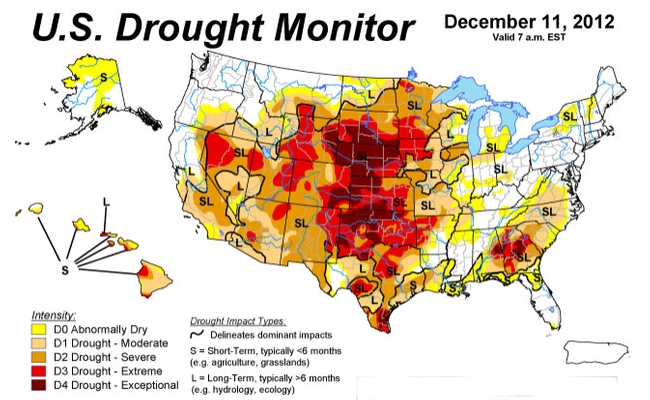Posts Tagged: Olive
The Achemon Sphinx Moth: A Lovely Beast, Indeed
It is indeed a “lovely beast,” as lepidopterist Art Shapiro, UC Davis distinguished professor of evolution and ecology, ...
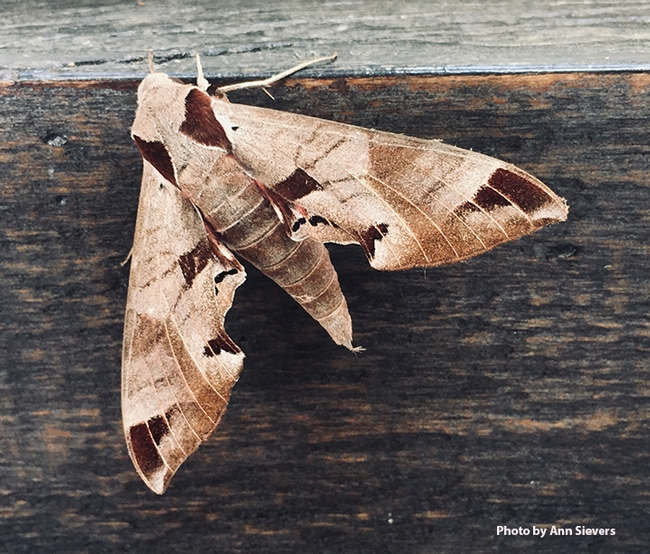
Eumorpha achemon, the Achemon Sphinx, is a "lovely beast," says UC Davis distinguished professor Art Shapiro. Ann Sievers, owner, grower and miller Il Fiorello Olive Oil Co., recently found this one the wall of her patio. (Photo by Ann Sievers)
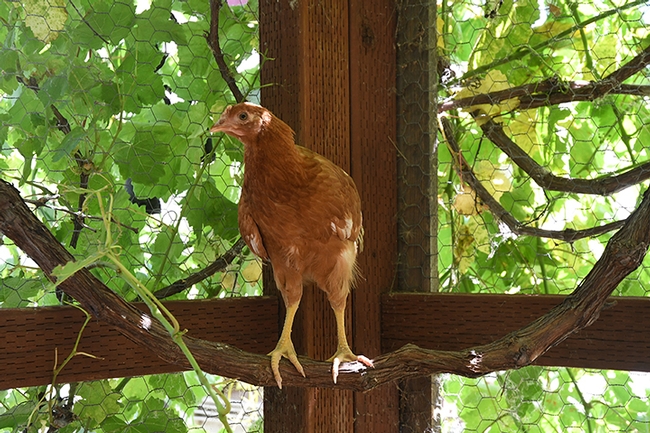
What's for lunch? A chicken in one of Ann Sievers' flocks at Il Fiorello Olive Oil Co., eyes the photographer. Chickens eagerly eat lots of bugs--if they're available. The larvae of the Achemon Sphinx moth feed on grape leaves. (Photo by Kathy Keatley Garvey)
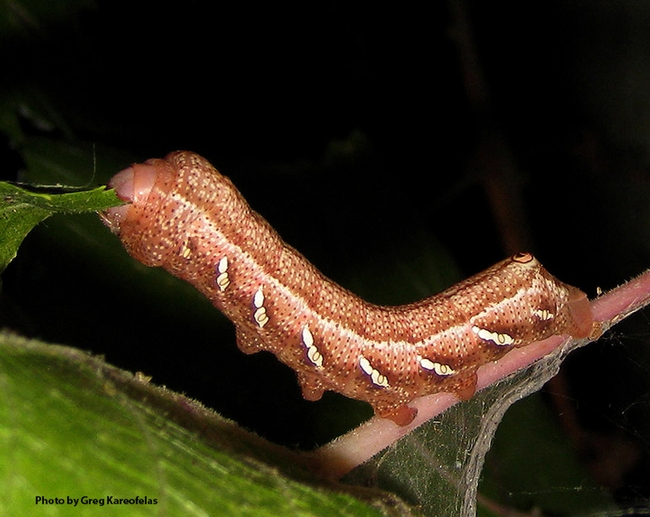
Naturalist-photographer Greg Kareofelas took this image of an Eumorpha achemon larva in his yard in Davis several years ago. It was feeding on native grape, Vitus californica. (Photo by Greg Kareofelas)
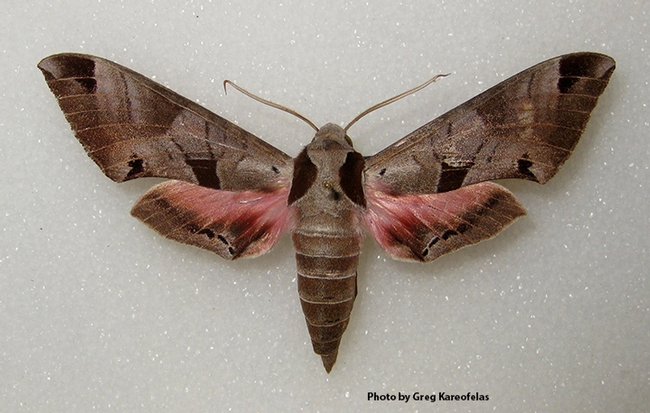
An adult Eumorpha achemon, photographed by naturalist-photographer Greg Kareofelas in his yard in Davis several years ago. It was feeding on native grape, Vitus californica. (Photo by Greg Kareofelas)
Her Name Was Olive
Her name was Olive. Every Friday morning she'd come bounding over to greet me, her tail wagging happily, one ear up, one ear down. I called her "My...
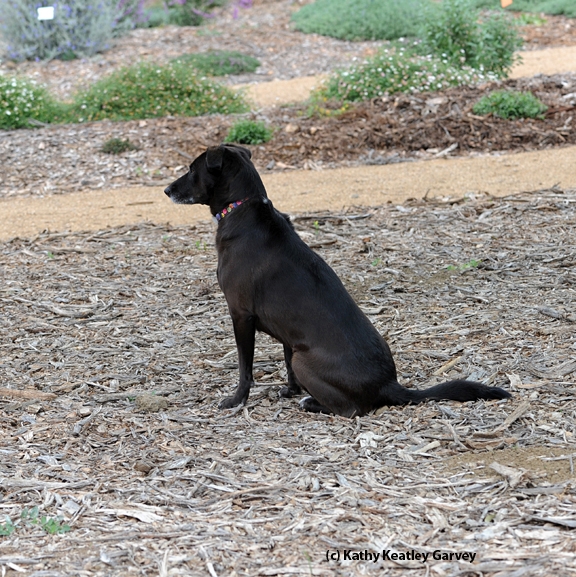
Olive attentively watches for Kris Kolb. (Photo by Kathy Keatley Garvey)
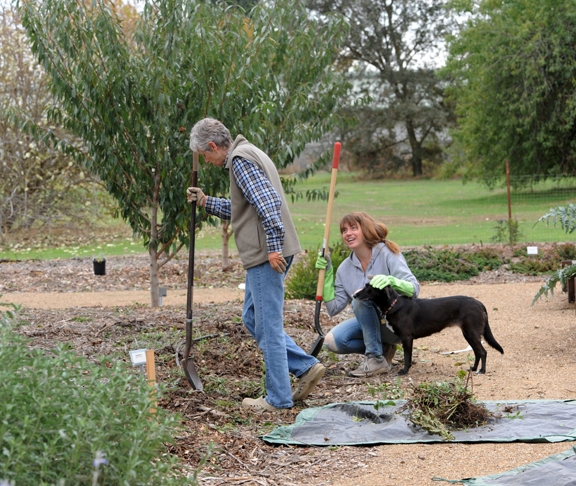
Sarah Hodge pets Olive, while Kris Kolb gardens. (Photo by Kathy Keatley Garvey)
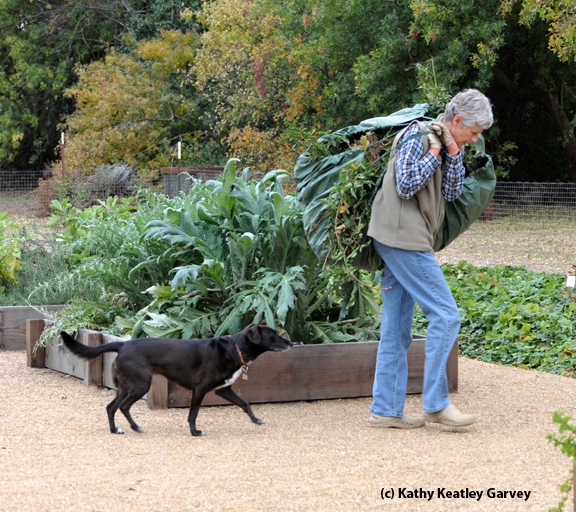
Olive faithfully follows Kris Kolb as she hauls away clippings. (Photo by Kathy Keatley Garvey)
McEvoy Ranch is for the Birds!
In April, I read about how McEvoy Ranch located in Petaluma, California, and known for their estate-quality extra-virgin olive oil, was hosting special events and tours this spring and summer at the property, which is usually closed to the public. Needless to say, I had to go. I signed up for the May bird-watching tour, which gave attendees an opportunity to stroll through various parts of the ranch (the actual ranch is approximately 550 acres, most of which is being farmed and not accessible by the public). Although I enjoy observing birds in and out of the garden, this was my first official bird-watching tour ever.
The varied topography of the Ranch consisting of rolling hills, valleys, and numerous ponds, and beautiful and diverse gardens, attract a wide array of birds. On the tour, we observed a barn owl in its box, hummingbirds, various songbirds, some brilliantly-colored orioles which resembled Meyer lemons with wings, and two very impressive and imposing vultures sunning themselves atop tall trees. In between bird-watching, we got to visit the olive orchards and gardens on the property. Wherever I go, my perennial favorite is the edible garden, so I was delighted to visit two of their gardens where ornamental flowers were/are integrated with edible plants and espaliered fruit trees (see pictures below). Albeit beautiful, these gardens are not simply for display. The Ranch uses the fruit from their citrus trees and the lavender from their lavender berm, to produce various products which they sell.
Tours and events at the Ranch continue throughout the summer and vary in both price and theme. The last I read, there will be, at minimum, orchard walks and olive mill tours, a jam-making workshop, a wreath-making workshop, a guided walk through owner, Nan McEvoy’s private sculpture garden, and a cooking demonstration and garden tour with the Ranch’s head chef. For more information, see http://www.mcevoyranch.com/.
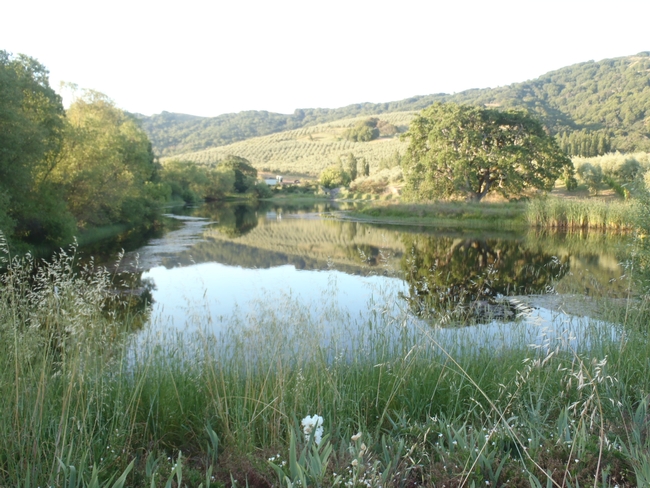
McEvoy Ranch (photos by Betty Homer)
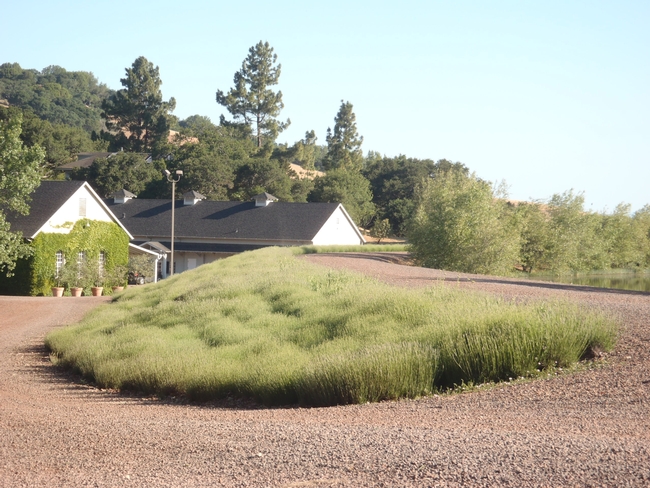
P5181528
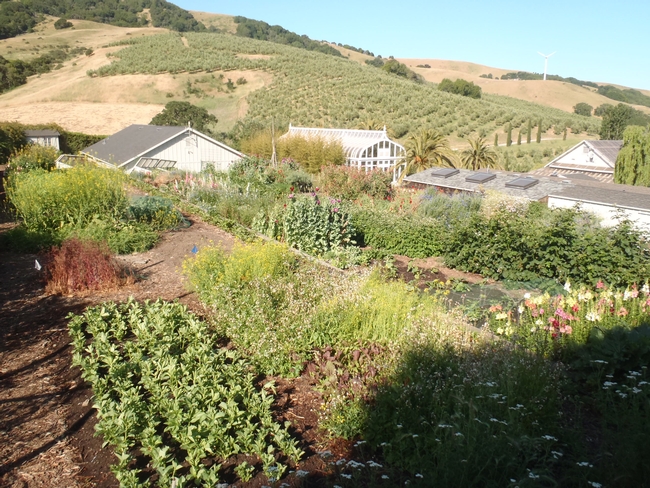
P5181554
Rain has painted California rangeland green
Steady rain so far this fall has produced a verdant emerald green panorama on California rangeland, reported Capital Press this week.
Livestock producers are elated, said Josh Davy, a UC Cooperative Extension advisor in Tehama County.
"It's been nice to start the year with some big rains because it fills up the reservoirs, puts some drinking water out there and it helps build deeper soil moisture in case it doesn't rain later," Davy said. "We hope it keeps going until March."
The 2012 rainy autumn has helped much of Northern California emerge from drought conditions, according to the U.S. Drought Monitor. Parts of the southern San Joaquin Valley are still in severe drought, but conditions have shown some improvement.
UC Davis olive center to look at ways to reduce wastewater
Melanie Turner, Sacramento Business Journal
The UC Davis Olive Center and USDA-Agricultural Research Service have been awarded a grant to develop innovative ways to reduce the amount of wastewater produced by the olive oil industry. Among the technologies to be evaluated is a “vibrating membrane system” patented by New Logic Research of Emeryville. The company will be providing the system for testing at no cost.
Olive Tree: Beauty and Bane
Do you have an olive tree, Olea europaea, in your landscape? We do - a 'Kalamata' olive. It's a beautiful evergreen tree that, once established, requires very little water. The pollen can be highly allergenic. Ten years ago, we brought it home from the Vacaville Home and Garden Show. It was a spindly little stick, not more than ten inches tall from root ball to tip. We were excited at the prospect of harvesting our own olives and curing them with a method my husband read about that used only water and salt instead of lye. Let me say, LOTS of water and salt. We planted it in the back portion of our vegetable garden, about two feet from the fence line. No, I was not a master gardener ten years ago, or I would have known to plant it farther from the fence.
Over the years, it's grown to about 20+ feet tall. Since then, that vegetable garden has been relocated to accommodate a swimming pool, the size of which was dictated by the location of the olive tree. My husband and I are out there pruning the tree a few times a year to keep it from hanging over the neighbor's yard. In the spring, the yellow pollen from the tree coats the patio and chairs in a thick yellow dust. From now until January, I am constantly picking up dropped olives to alleviate staining of the concrete. And the olives we were going to cure? Haven't eaten a single one. On the upside, the tree provides a terrific area of shade to sit under, and lends a distinctively Mediterranean atmosphere to the backyard. It is a beautiful tree.
So what have I learned from this tree? Two feet between a tree and a fence is nowhere near enough. Curing olives takes time and patience. Even though olive trees grow well in Solano County, don't plant them near a pool!
Don't put a pool next to an olive tree.


